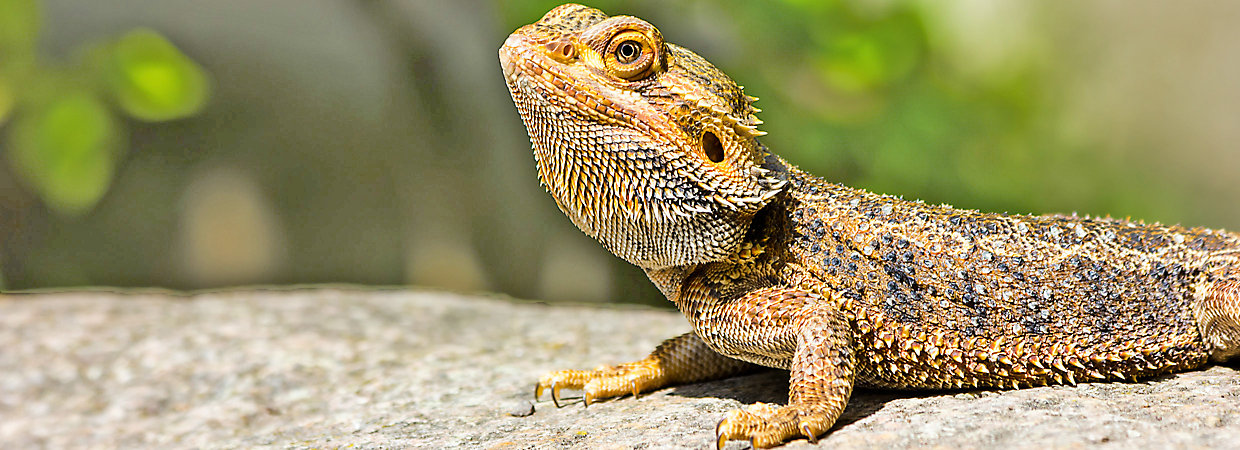Sign up, earn points, get treats
A Set-up Guide for Reptile Habitats

What kind of terrarium does my reptile need?
- Depending on the species, your reptile may require more or less space to roam. Keep in mind that young pets may require smaller spaces than what they’ll need as adults.
- As for the terrarium’s shape? As a rule of thumb, reptiles that climb should have a terrarium that’s taller than it is wide. Reptiles who don’t climb should have a terrarium wider than it is tall.
- Make sure the terrarium is placed on a very stable surface so it won’t tip over. Put it in a low-traffic area out of direct sunlight, drafts and strong smells. It should be near an electrical outlet so you can plug in the lighting and heating units.
Your reptile’s environment
- Snakes, lizards, tortoises and other reptiles are ectothermic, which means they get their heat from outside their bodies.
- Your reptile’s terrarium should have a warmer end and a cooler end, so your pet can travel back and forth between the two as necessary. For the warm side, place a heat lamp, ceramic heat emitter or night-specific heat bulb over an elevated spot, like a nice, flat rock. This will be your scaly pal’s basking spot.
- The exact temperature and humidity of the habitat depends on where your reptile originally came from. Invest in two thermometers, one for each end of the habitat, to monitor the climate and a hygrometer to monitor the moisture in the air.




